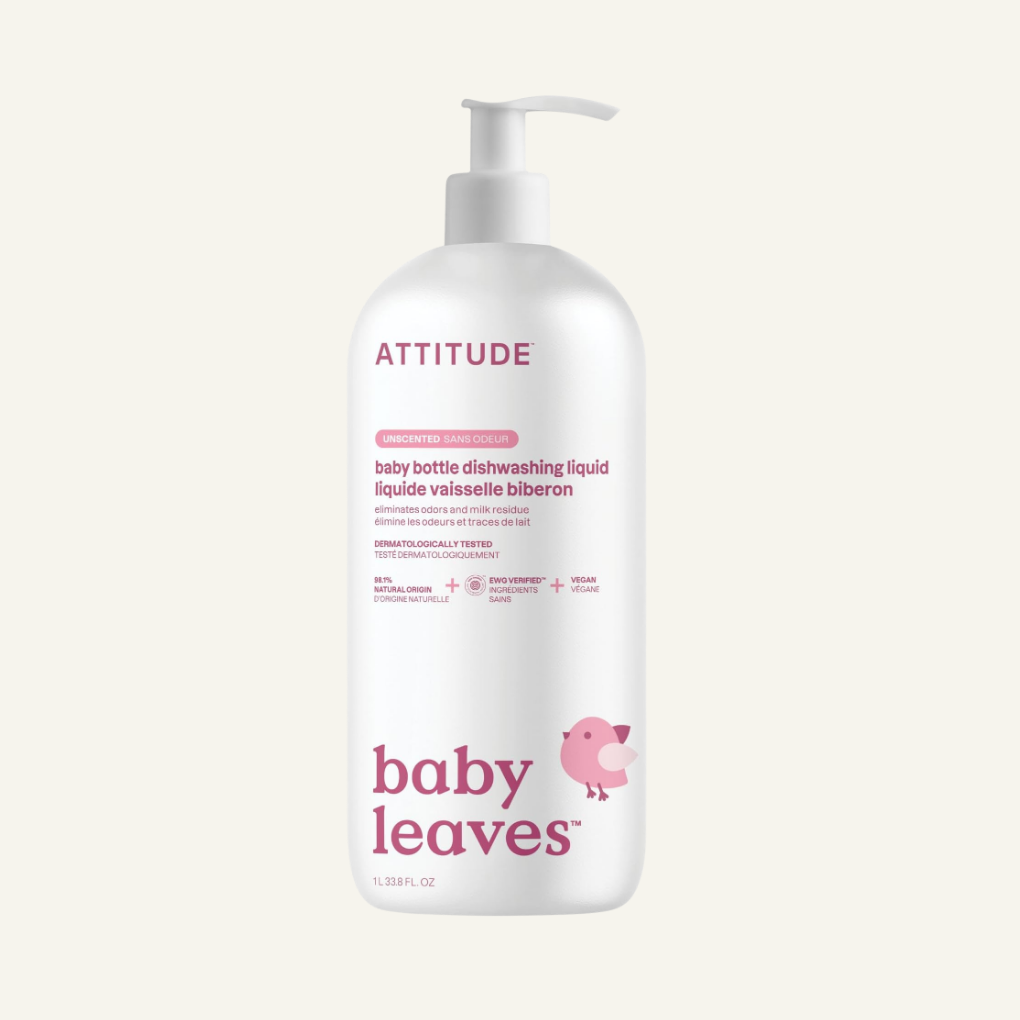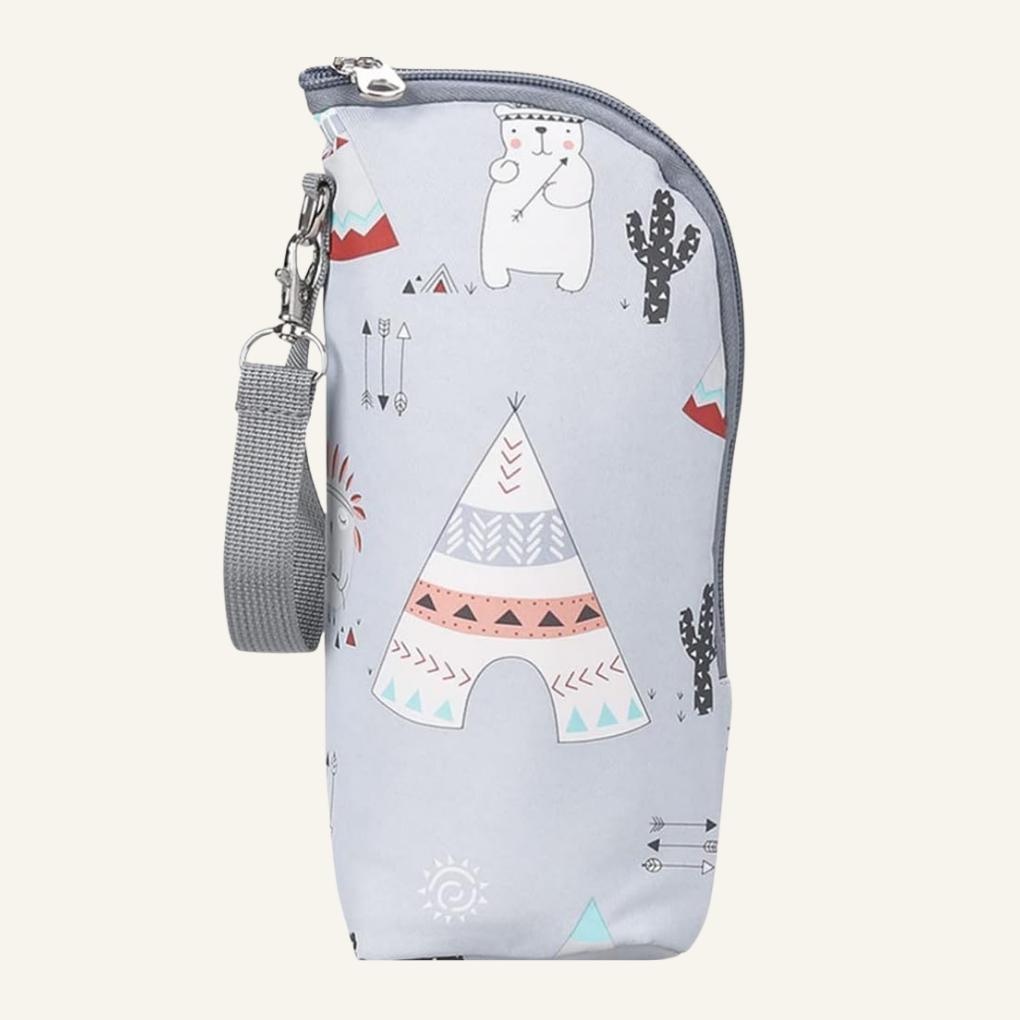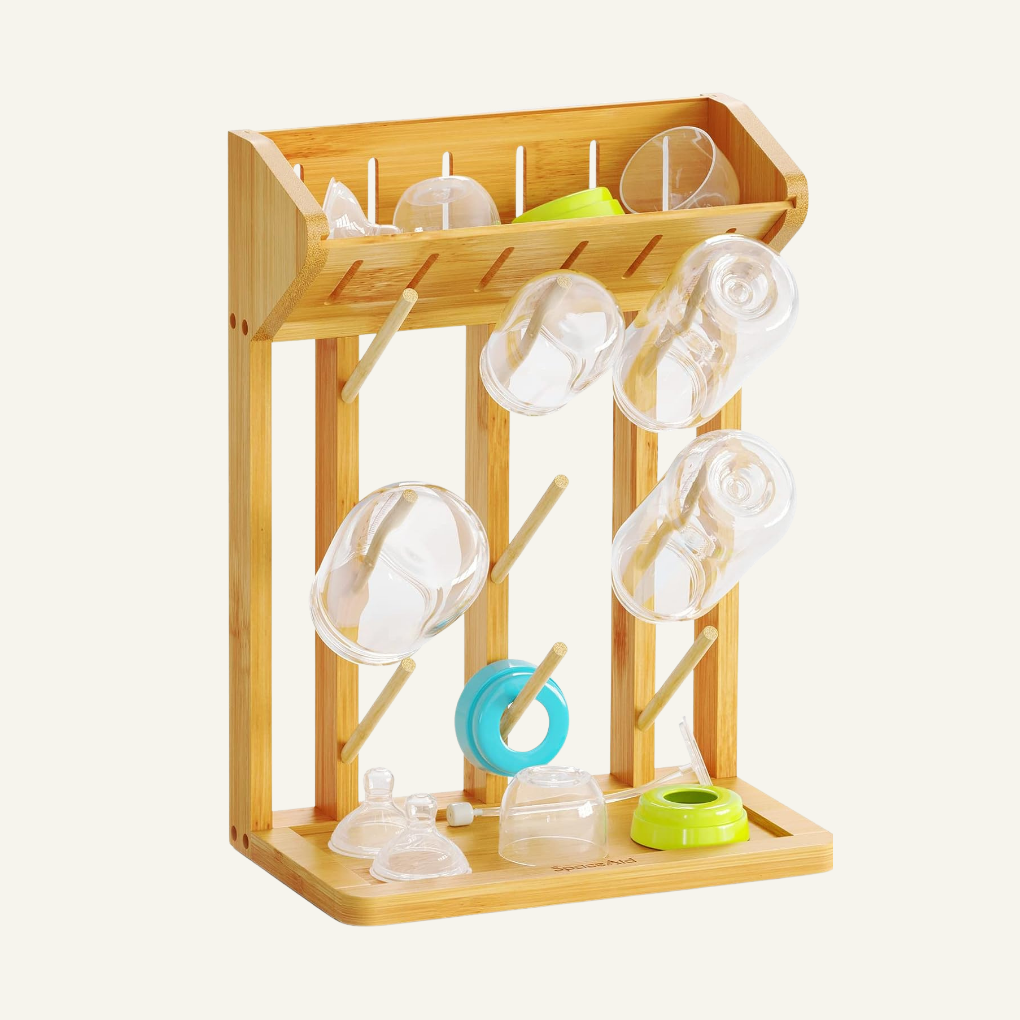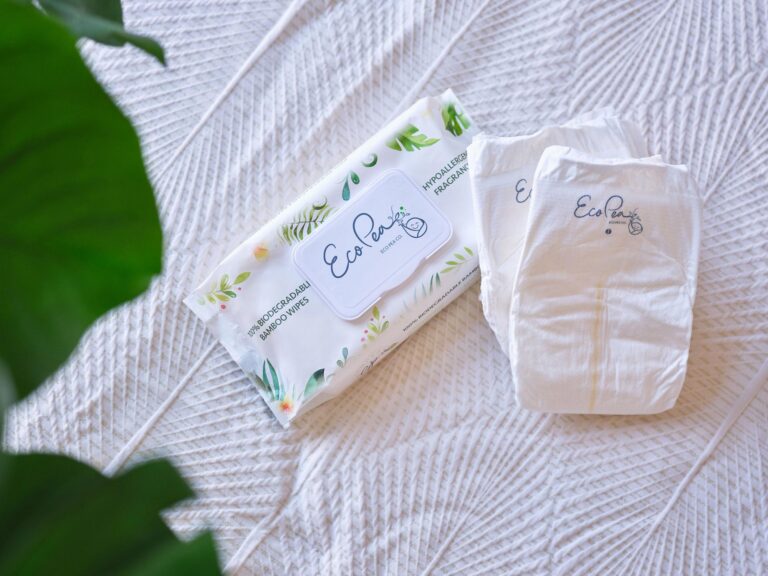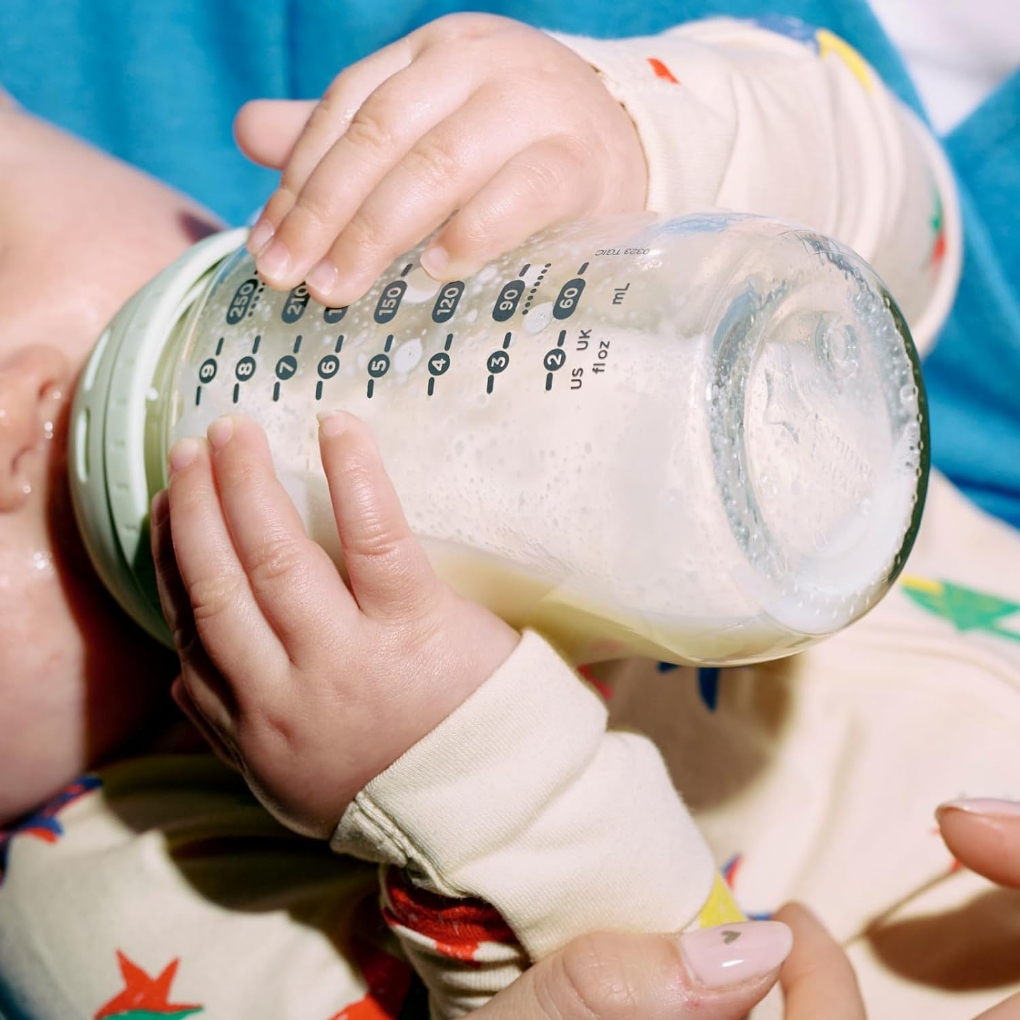
Key Takeaways
- Glass baby bottles are non-toxic and won’t release microplastics or harmful chemicals into your baby’s milk.
- They are durable, easy to sterilize, and resistant to stains and odors, making them safer and longer lasting than plastic bottles.
- While heavier than plastic, today’s glass bottles use thermal shock–resistant designs and protective sleeves to reduce the risk of breakage.
The best glass baby bottles in 2025 are safe, durable, and completely free from microplastics. Unlike plastic bottles, they don’t shed tiny particles or leach chemicals like BPA, giving parents a healthier, longer-lasting feeding option.
This choice matters because research shows that infants fed with plastic bottles may ingest an average of 1.6 million microplastic particles per day when bottles are heated, shaken, or sterilized. Glass bottles are chemically inert, which means they won’t shed microplastics or leach harmful chemicals like BPA or phthalates into your baby’s milk.
In this guide, we’ll cover the benefits of glass baby bottles, what to consider before buying, how to choose the right bottle for your baby, and the top recommended brands. We’ll also compare Glass to other options, such as plastic, silicone, and stainless steel, so you can decide what’s best for your family.
Are Glass Baby Bottles Safer Than Plastic?
Glass baby bottles are safer because they don’t shed microplastics or leach chemicals like BPA into your baby’s milk. Research shows that plastic bottles, especially those made of polypropylene, can release microplastic particles when heated, sterilized, or even shaken — meaning those particles may end up in your baby’s formula or breast milk.
Unlike plastic, glass is a stable material that won’t release BPA, phthalates, or microplastics into your baby’s milk. It also resists stains and odors, holds up to repeated sterilization, and is easier to keep clean over time.
The main drawbacks of glass bottles are weight and the chance of breaking, but modern designs solve most of these concerns. Many brands now use tempered, thermal shock–resistant glass and include silicone sleeves for grip and protection, making today’s glass bottles sturdier and more practical than most parents expect.
By choosing glass, you’re eliminating the hidden microplastic exposure associated with plastic bottles while providing your baby with a safe, durable, and long-lasting feeding option.
Don’t Miss: Plastic-Free Living Learn why cutting back on plastic matters for your health and the planet—and discover simple swaps to get started. Read more →Non-Toxic and Safe Materials Matter
The safety of a baby bottle depends most on its materials, not just its shape or size. Babies are more vulnerable to chemicals because their bodies are still developing, and many bottles on the market can still leach toxins when exposed to heat or wear.
The Problem with Plastics
BPA-free doesn’t mean risk-free — many plastic bottles can still release chemicals like BPS, phthalates, or PVC. Over time, heat and repeated cleaning break plastics down, which can leach both chemicals and microplastics into your baby’s milk.
Why Glass Is Safer
Glass is naturally plastic-free, so it won’t shed microplastics or leach chemicals when exposed to heat, detergents, or formula. High-quality bottles are made with tempered or borosilicate glass that resists cracking and sudden temperature changes. Paired with medical-grade silicone nipples, glass bottles provide one of the safest, non-toxic feeding setups available.
🔍What to Watch For:
- Lead Safety: Avoid vintage or imported bottles with painted markings; choose brands with third-party lead testing.
- Silicone Parts: Stick to medical-grade silicone or natural rubber for nipples, collars, and sleeves.
- “Plastic-Free” Labels: Check that bottles are genuinely 100% plastic-free or made with safe components like silicone seals.
Do glass baby bottles break easily?
Glass baby bottles don’t break as easily as many parents fear. Most are made with thermal shock–resistant glass and often include silicone sleeves for grip and protection. While they can still break if dropped on a hard surface, it’s far less common than most people assume.
Choosing the Right Glass Baby Bottle for Your Baby
The best glass baby bottle is the one that matches your baby’s feeding style, not just the brand name. While it can take trial and error, focusing on the right features will save time and frustration.
Key Factors to Consider:
- Nipple Shape & Flow Rate: Some babies prefer a wide-base nipple that mimics breastfeeding, while others do better with a narrow-neck nipple. Flow rate is critical; too fast can cause gas or choking, too slow can frustrate your baby. Most brands offer slow, medium, and fast-flow options, and some have “natural response” nipples that let babies control the flow.
- Venting Systems: If your baby struggles with gas, colic, or reflux, an internal vent or anti-colic system can help reduce air intake.
- Bottle Size: Newborns often start with 4-oz bottles, but as your baby grows, you’ll likely move to 8 or 9 oz. Many brands sell bottles in both sizes, allowing you to stick with one system.
- Weight and Grip: Glass bottles are generally heavier than plastic ones. Some babies may have trouble holding them independently, but silicone sleeves add grip and protect against slips.
- Baby’s Feeding Rhythm: If you’re supplementing or combining breastfeeding and bottle feeding, look for nipples designed for a deep latch and a balanced flow that better mimics natural feeding.
✨tip
Lactation Consultant
If your baby isn’t taking to a new bottle right away, don’t worry; sometimes it just comes down to finding the right nipple shape, flow speed, or even a different feeding position. If you’d like extra support, a lactation consultant can guide you through options and provide personalized guidance.
You can use the International Lactation Consultant Association’s global directory to connect with an IBCLC (International Board Certified Lactation Consultant) who specializes in infant feeding.
How Do Glass Baby Bottles Compare to Other Types?
Glass, plastic, silicone, and stainless steel baby bottles all have different pros and cons, and understanding the differences makes it easier to choose the safest option for your baby.
Glass Baby Bottles
- Pros: Non-toxic, free from microplastics, easy to sanitize, dishwasher safe, resistant to odors and stains, and long-lasting.
- Cons: Heavier and can break if dropped, though silicone sleeves reduce this risk.
Plastic Baby Bottles
- Pros: Lightweight, inexpensive, widely available, won’t shatter.
- Cons: Can release microplastics and chemicals like BPA, BPS, or phthalates. Scratches easily, which can harbor bacteria. Needs frequent replacement.
Silicone Baby Bottles
- Pros: Flexible, lightweight, and soft, making it easy for babies to hold. Made with food- or medical-grade silicone, which is generally safe.
- Cons: Less durable than Glass or steel, may retain odors, and not all brands are 100% free from fillers.
Stainless Steel Baby Bottles
- Pros: Virtually unbreakable, plastic-free, lightweight, and long-lasting. Often convertible to sippy cups or water bottles for older kids.
- Cons: Opaque, so it’s harder to see how much milk is left. Typically more expensive.
What Are the Best Glass Baby Bottles?
There are more glass baby bottle options today than ever before. Each brand has its own strengths, from anti-colic features to protective sleeves and eco-friendly designs. Here are some of the most trusted choices parents turn to.
ℹ️Heads up: Not every bottle within a brand’s lineup is made from the same materials. Some companies sell both glass and plastic versions, so always double-check the product description to confirm you’re getting the glass bottle you want.
BIBS
$14-18
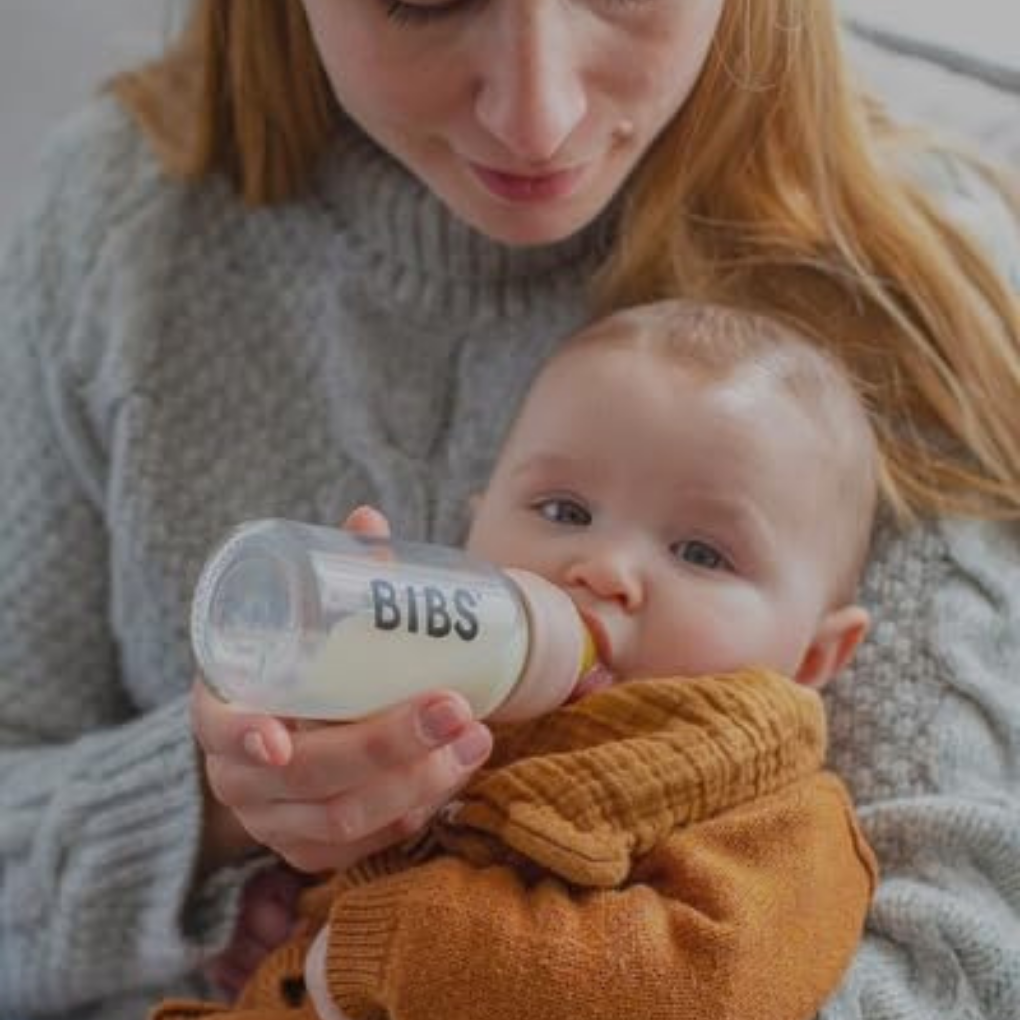
BIBS is a Danish brand that has been around since the 1970s, best known for its iconic natural rubber pacifiers.
More recently, they expanded into baby bottles with the same philosophy: safe, thoughtfully designed, and stylish.
Their glass baby bottles are made from durable borosilicate glass and feature a medical-grade silicone nipple, designed to reduce microplastics and exposure to harmful chemicals.
Key Features
- Borosilicate Glass: Lightweight, thermal shock-resistant, and dishwasher safe.
- Medical-Grade Silicone Nipples: Soft and safe, available in different flow rates.
- Anti-Colic Venting System: Helps reduce gas and fussiness during feeding.
- Scandinavian Design: Minimalist style with color-matched caps and collars.
What Parents Say
Parents consistently describe BIBS bottles as beautifully designed and of high quality. Many note that the glass feels lightweight yet sturdy, and the wide-neck shape makes cleaning less of a chore.
The nipples get praise for being soft and easy for babies to latch onto, though some parents mention that finding the correct flow rate can take a bit of trial and error.
A few reviewers also say they’re willing to pay a premium because the bottles feel safer and healthier than plastic alternatives.
HEVEA
$35-38
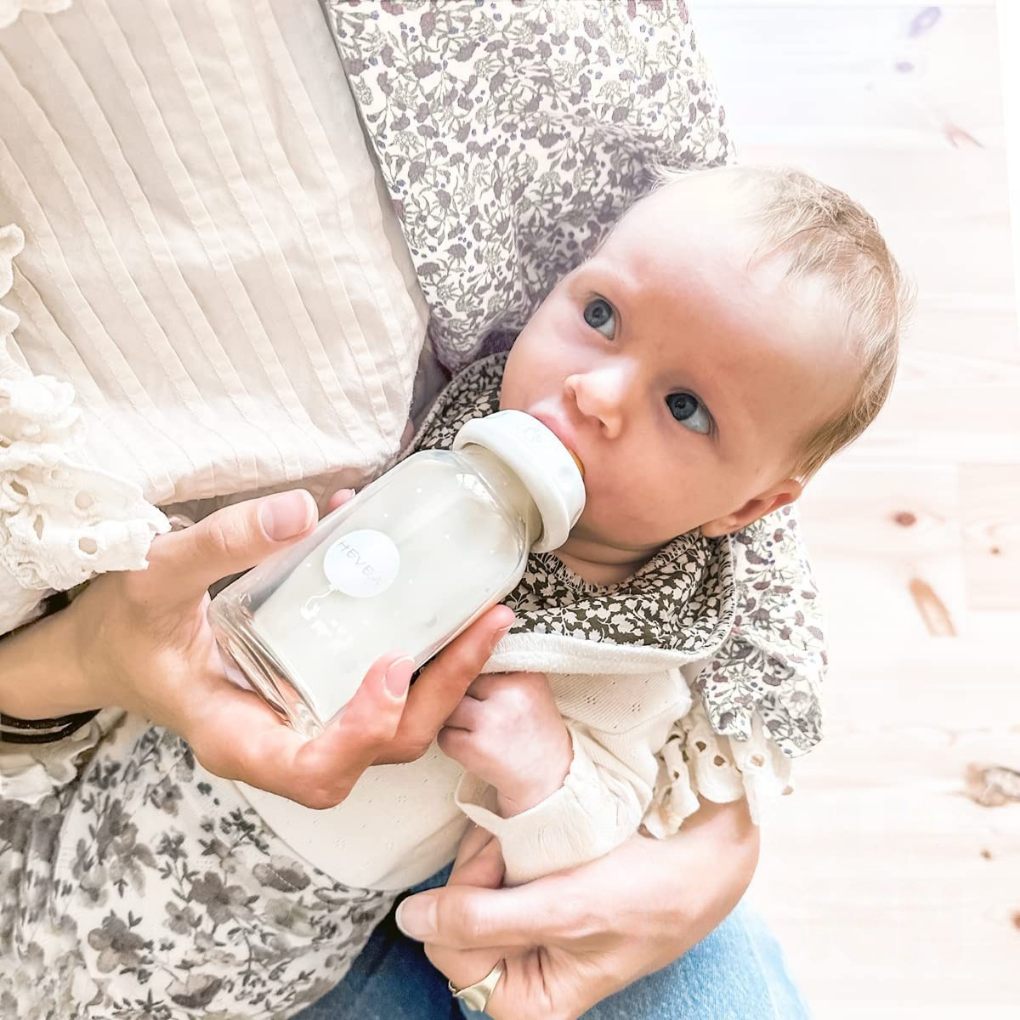
If you’re looking for a truly plastic-free baby bottle, HEVEA is one of the rare brands that delivers.
The company is a Danish eco-conscious brand known for using safe, natural materials, such as borosilicate glass and natural rubber, in place of plastics, making their bottles a favorite among parents who prioritize sustainability and safety from the start.
Key Features
- Borosilicate Glass: Lightweight yet durable, resistant to thermal shock, and free from BPA, PVC, and phthalates.
- Natural Rubber Nipples: Softer than silicone, designed to mimic breastfeeding for an easier latch.
- Standard Neck Design: Compatible with many accessories, but may require some adjustment if your baby prefers wide-neck bottles.
What Parents Say
Parents who use HEVEA glass bottles often highlight how well their babies take to the natural rubber nipples, tiny ones who reject silicone.
Many mention that the bottles feel solid and well-made, with no lingering odors or aftertaste even after repeated washings.
The main drawback parents mention is that natural rubber nipples wear out more quickly than silicone, so they need to be replaced more often.
A few also note that the standard neck design can be more challenging to pour from compared to wide-neck bottles. Still, overall feedback is very positive.
Lifefactory
$11-28
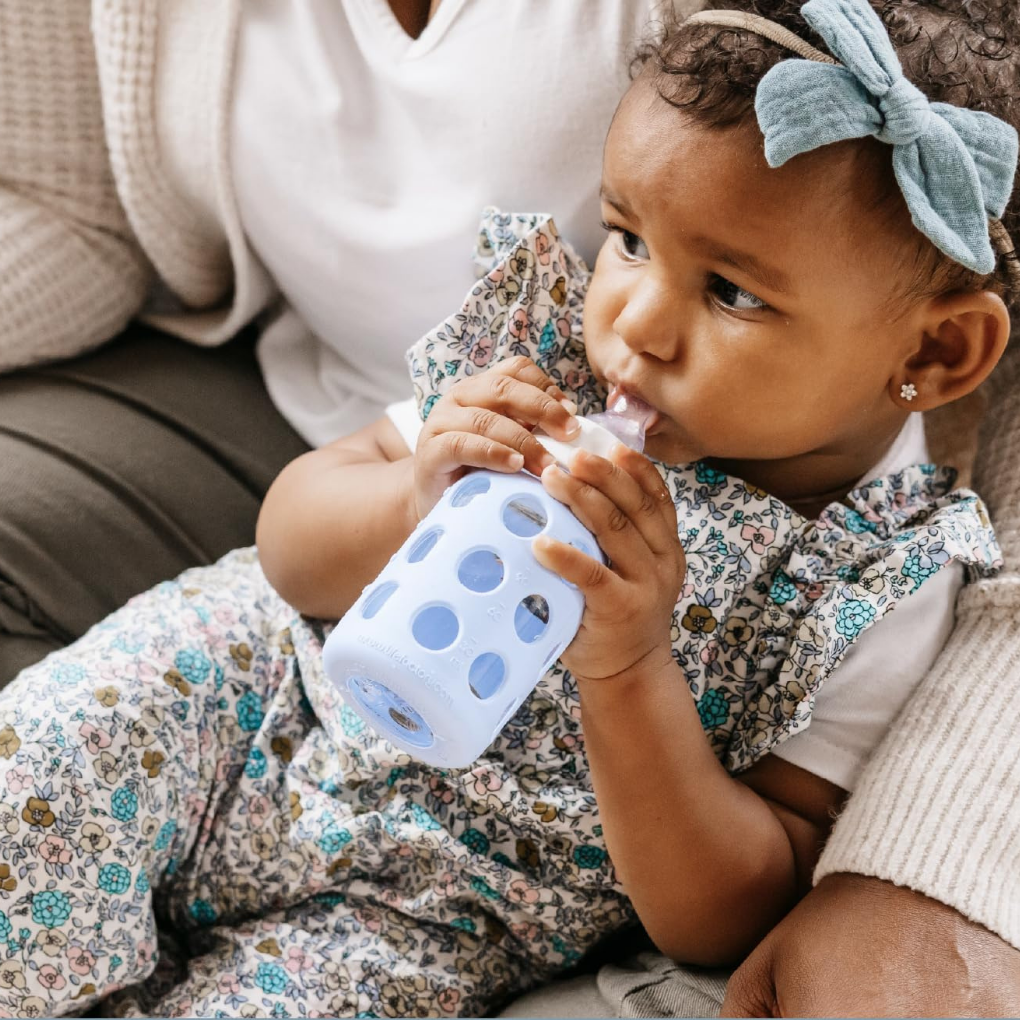
Lifefactory is best known for its durable glass bottles wrapped in colorful silicone sleeves that make them both sturdy and stylish.
Founded in California, the brand blends modern design with a focus on safe, non-toxic materials, giving parents a long-lasting alternative to plastic bottles.
Key Features
- Borosilicate Glass: Strong, thermal shock-resistant, and dishwasher safe.
- Protective Silicone Sleeves: Add grip, reduce the chance of breakage, and come in a variety of colors.
- Wide-Neck Design: Makes filling and cleaning easier while accommodating most brushes.
- Convertible System: Bottles can be reused with different tops as your child grows — transitioning from baby bottle to sippy cup to water bottle.
What Parents Say
Parents love the sturdy feel of Lifefactory bottles and often comment that the silicone sleeves give them peace of mind against drops.
Many also appreciate the wide-neck design for easier cleaning and mixing the formula.
A significant advantage is the convertible system, which allows families to use the bottles well beyond the baby stage.
The main downsides parents mention are the higher cost and the fact that, while durable, the bottles can still break if dropped on a hard surface.
Tommee Tippee
$25-50

Tommee Tippee is a UK brand founded in the 1960s that has become one of the world’s most recognizable baby bottle manufacturers.
Their Closer to Nature Glass Bottles are made with durable glass and designed with Tommee Tippee’s signature wide, breast-like nipples.
The idea is to make it easier for babies to transition between breast and bottle while providing parents with a non-toxic, plastic-free option.
Key Features
- Borosilicate glass: Free from BPA, phthalates, and microplastics.
- Breast-Like Nipples: Soft silicone nipples with a wide, rounded base to encourage a natural latch.
- Anti-Colic Valve: Built-in venting system to reduce air intake and gas.
- Ergonomic Shape: Curved bottle design makes it easier to hold while feeding.
What Parents Say
Parents often choose Tommee Tippee for the nipple design, saying their babies latch onto it more easily than with standard narrow nipples.
Many breastfeeding parents report that the transition between breast and bottle is smoother with this brand.
Some parents note that while the anti-colic valve works well, occasional leaks can happen if the nipple isn’t fitted correctly.
Dr. Brown’s
$10-36
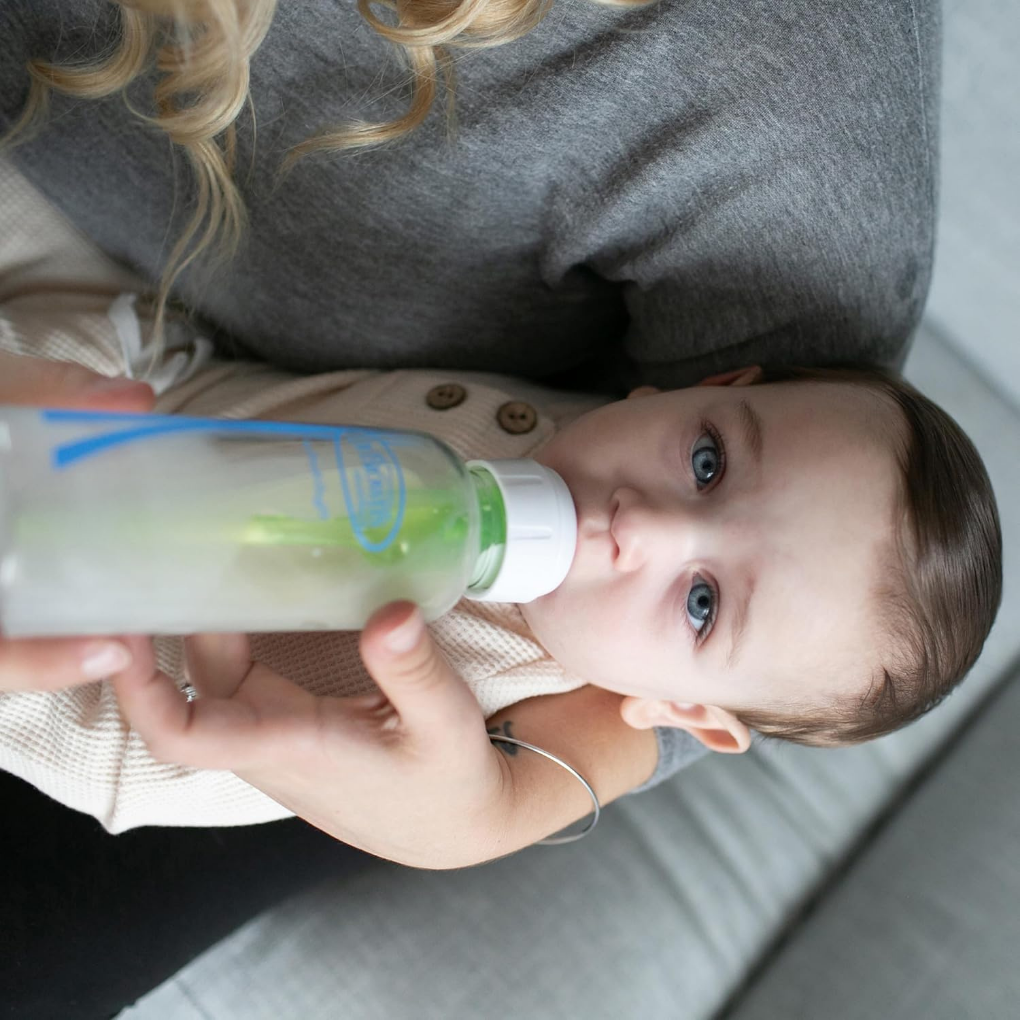
Dr. Brown’s is an American brand founded in 1996 and headquartered in Missouri. They’re best known for their patented anti-colic vent system and were one of the first companies to bring this innovation to baby bottles.
While bottles are their flagship product, the brand has since expanded into a complete line of baby feeding gear, including breast pumps, sterilizers, and sippy cups.
The Natural Flow Glass Bottles combine their trusted venting technology with safe, durable glass, offering parents a choice between performance and non-toxic materials.
Key Features
- Tempered Glass Construction: Strong, dishwasher safe, and free from BPA, phthalates, and other harmful chemicals.
- Anti-Colic Vent System: A patented internal vent reduces air intake, which can help with gas, reflux, and fussiness.
- Narrow and Wide-Neck Options: Designed to suit different latch preferences.
- Compatibility: Works with a wide range of Dr. Brown’s nipples and accessories.
What Parents Say
Parents often call Dr. Brown’s bottles a lifesaver for colicky babies, with many saying it’s the only bottle their child would feed from comfortably.
Reviewers praise the vent system for reducing gas and reflux, though they acknowledge it comes with extra parts to clean.
A few caution that the bottles can leak if not assembled carefully, but overall, most agree they’re worth the effort for the relief they provide.
How Do You Safely Clean and Maintain Glass Baby Bottles?
Glass baby bottles are easier to sanitize than plastic and can safely handle boiling, dishwashing, and repeated sterilization without breaking down. Following a few simple cleaning steps keeps them safe and long-lasting.
🧼Daily Cleaning
- Wash bottles with hot, soapy water right after use to prevent milk residue from hardening.
- Use a bottle brush to reach inside, and a detail brush for nipples, collars, and vents.
- Let all parts air-dry on a clean rack instead of using a towel, which can introduce bacteria.
🍽️Dishwasher Safety
Most glass bottles are dishwasher-safe, and many parents appreciate the convenience. Place bottles on the top rack to avoid bumping or chipping. Always check the manufacturer’s instructions before running them through a cycle.
🔥Sterilization
- Glass bottles can withstand boiling water for quick sterilization.
- Some parents prefer electric sterilizers or microwave steam bags, which are also safe for Glass.
- Avoid sudden temperature changes that can cause thermal shock, such as moving a bottle directly from the freezer into boiling water.
🎒Storage and Transport
- Always use protective caps or travel covers when carrying bottles in a diaper bag to prevent spills.
- Silicone sleeves add extra protection against breakage and make bottles easier to grip.
- Store bottles in a dehydrated and assembled state, loosely to prevent trapped moisture.
♻️Replacement Tips
- Nipples wear out faster than bottles. Replace them every two to three months, or sooner if you notice thinning, stickiness, or cracks.
- Glass bottles can last for years if cared for properly, but retire any bottle that chips or cracks.
With the proper cleaning routine and careful handling, glass bottles can be a safe, durable, and hygienic option throughout your baby’s feeding journey.
✨tips
How to Dispose of Old Baby Bottles
Old baby bottles shouldn’t go straight in the trash — most parts can be recycled or repurposed. Here’s how to handle each material safely:
- Glass bottles: Recycle with other glass containers once clean. Chipped or cracked bottles can still be recycled, but remove any extra parts first.
- Plastic bottles: Usually made from polypropylene (#5). Some curbside programs accept them, but always check local guidelines. If not recyclable in your area, consider repurposing them for crafts, storage, or toys.
- Nipples: Made from silicone or latex. These aren’t accepted in curbside recycling. Unless your area has specialty silicone recycling, they typically go in the trash.
- Collars & lids: Typically polypropylene (#5). Recycle with plastics if accepted locally, or look for specialty programs like Preserve’s Gimme 5.
- Silicone sleeves: Not recyclable curbside. Check specialty programs like TerraCycle; otherwise, dispose of it in the trash.
Taking a few extra minutes to separate and sort these parts helps reduce landfill waste and keeps plastic out of the environment.
Bottle Nipples and Accessories
Choosing the right nipple and accessories is just as important as the bottle itself, since flow rate and materials directly affect your baby’s comfort and safety.
Nipple Types and Materials
- Silicone Nipples: Most glass bottles come with medical-grade silicone nipples. They are durable, easy to clean, and resist absorbing odors.
- Natural Rubber Nipples: Softer and more flexible, but they wear out faster and may not be ideal for babies with latex sensitivities.
Nipple Shapes and Flow Rates
- Narrow Nipples: Work well for babies who have a tight latch or prefer a smaller surface area.
- Wide-Base Nipples: Designed to mimic breastfeeding, making the transition between breast and bottle easier.
- Flow Rates: Start with slow-flow nipples for newborns. As your baby grows, you can gradually move to medium or fast flow. Always do the nipple test by turning the bottle upside down. The milk should drip slowly, not stream out.
Useful Accessories
- Baby Bottle & Dish Soap: To complement your brush, try ATTITUDE soap, an EWG-verified, plant-based formula that’s unscented and designed to remove milk residue and grease without harsh chemicals.
- Cleaning Tools: A Redecker natural bristle bottle brush is a parent favorite for glass bottles. It’s made with a wooden handle and natural bristles, making it both effective and plastic-free. For hard-to-reach spots, you can pair it with a small wire detail brush.
- Temperature Control: Certain bottles and accessories, such as the Kisangel insulated bottle sleeve, help keep milk warm on the go.
- Drying Rack: Spaceaid offers a space-saving, eco-friendly way to air-dry bottles and accessories, keeping everything organized without relying on plastic racks.
Matching the right nipple and accessories to your baby’s feeding needs can help prevent frustration and reduce common issues, such as gas, leaks, and clogged nipples.
FAQs About Glass Baby Bottles
Glass bottles themselves are microwave-safe, but experts don’t recommend microwaving baby milk. The heat doesn’t distribute evenly, which can create dangerous hot spots that may burn your baby’s mouth. Microwaving can also reduce nutrients in breast milk. A safer option is to warm bottles in a bowl of warm water or with a bottle warmer.
Yes, many glass bottles are designed to be freezer-safe, especially those made from tempered or borosilicate glass. Always check the manufacturer’s guidelines first. Leave some headspace because breast milk expands as it freezes. Thaw slowly in the refrigerator or under cool running water to avoid thermal shock that could crack the glass.
If your bottles are freezer-safe:
Leave headspace: Breast milk expands as it freezes, so never fill bottles all the way to the top.
Thaw slowly: Place frozen bottles in the refrigerator overnight or run under cool water to gently defrost.
Avoid thermal shock: Don’t move a bottle straight from the freezer into boiling water or a hot warmer — this sudden change can cause glass to crack.
Consider storage bottles: Some parents prefer using glass bottles specifically designed for freezer storage to reduce the risk of breakage.
Most modern glass baby bottles from reputable brands are lead-free. The main risk comes from vintage or imported bottles that may use paint or decorations containing lead or cadmium. To be certain, choose brands that publish third-party testing results for heavy metals. If you’re unsure about an older bottle, it’s best not to use it for feeding.
Glass bottles are heavier than plastic, but most babies don’t hold bottles independently until they’re older. By that stage, many brands offer silicone sleeves that make bottles easier to grip and less slippery. Parents often find the extra weight is a small trade-off for the safety and cleanliness of glass.
Yes, most glass baby bottles are dishwasher-safe, especially those made from tempered or borosilicate glass. For best results, place them on the top rack to prevent bumping or chipping, and follow the manufacturer’s instructions. Dishwashing not only cleans but also helps sanitize bottles more thoroughly than hand washing alone.
Glass bottles can last for years if cared for properly, making them more durable than most plastic bottles. Nipples wear out faster and should be replaced every two to three months, or sooner if they show thinning or cracks. Retire any glass bottle that becomes chipped or damaged, but otherwise, many families reuse the same bottles for multiple children.
Final Thoughts on Best Glass Baby Bottles
Choosing the right baby bottle can feel overwhelming with so many options out there, but glass really does take away a lot of the guesswork. It’s safe, durable, and, most importantly, free from the microplastics and hidden chemicals that plastic bottles can release.
At the end of the day, the “best” glass bottle is the one that fits your baby’s needs and makes feeding easier for you.
Featured image is from Amazon.
📚References
- EarthDay.org. (2023). Babies vs. plastics: What every parent should know. Earth Day Network. Retrieved August 26, 2025, from https://www.earthday.org/babies-vs-plastics-what-every-parent-should-know/
- Lead Safe Mama. (2024). Baby bottle guide: Lead-free bottles and safety testing. Lead Safe Mama. Retrieved August 26, 2025, from https://tamararubin.com/lead-safe-mama-baby-bottle-guide/
- Li, D., Shi, Y., Yang, L., Xiao, L., Kehoe, D. K., Gun’ko, Y. K., Boland, J. J., & Wang, J. J. (2020). Microplastic release from the degradation of polypropylene feeding bottles during infant formula preparation. Nature Food, 1(11), 746–754. https://doi.org/10.1038/s43016-020-00171-y
- Wired. (2020, October 19). Babies may be drinking millions of microplastic particles a day. Wired. Retrieved August 26, 2025, from https://www.wired.com/story/babies-may-be-drinking-millions-of-microplastic-particles-a-day/
💬 What matters most to you when choosing a baby bottle—safety, ease of use, or sustainability? Share your thoughts in the comments!
